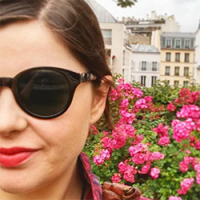
If you have a sweet tooth, you get it. If you don’t, you don’t. It’s as simple as that. This one goes out to all my people who have never been able to say no to dessert, even if their skinny jeans were already cutting an uncomfortable line into their stomachs. Of course, if you’re a real professional, you know to wear stretchy fabrics to dinner, but that’s not my point. Here are some of my favourite ways to indulge your sweet tooth in Europe, although of course there are many, many more!
Go to Albert Cuyp Market in Amsterdam
Anyone who’s known me for longer than 30 minutes will know of my love of Dutch sweets. For a country so keen on raw herring and salty licorice, they sure do get it right with biscuits and cakes! But imagine my surprise when I learned that the humble stroopwafel – two extremely thin wafers held together with sticky caramel, normally found in plastic packaging from the supermarket – can be BOUGHT AND CONSUMED FRESH AND WARM. I’m not even joking – this has possibly been the highlight of my Busabout experience so far. Get yourself over to Albert Cuyp Market in the impossibly hip De Pijp district of Amsterdam and experience this magic for yourself, at one of the last remaining stalls to sell freshly made stroopwafel.
Find room for dessert in Basque country
I found love in San Sebastian, with a giant slice of Torta de Queso and a lovely little glass of dessert wine. This is not just any cheesecake, it’s Basque style cheesecake. If you can know just one thing about the Basque region in Spain, know this: the food is amazing. In San Sebastian there is a bar called La Vina, which is well known for their prolific production of this melt-in-your-mouth-post-dinner-goodness. The secret may lie in the fact that there’s about a tablespoon of flour in the whole thing. The rest is cheese, milk and eggs, with a delicious caramelised top. Don’t leave San Sebastian without trying it!
Eat cake like a royal (or an intellectual!) in Vienna
Vienna might not be the first place you’d think of as being a cake lover’s paradise, but these guys have a long history in satisfying the sweet tooths of the wealthy and the intellectual elite. Sacher Torte, which is dark chocolate with apricot filling, is the most famous Viennese cake. You can try it at Hotel Sacher (or all over the city, really) but my tastebuds are always ready for something a little more adventurous.
For a dose of historical grandeur I visit Demel (former confectioner to the royal court of the Habsburgs, Kohlmarkt 14), who not only have exciting ice cream flavours like violet, but cases upon cases of beautifully crafted cakes. They have miniature Sacher Tortes (great if you don’t want to commit to a big one) and any number of other chocolate, cream, or fruit confections.
If you like your coffee and cake a little less imperial and a little more bourgeois, you’re also in luck. Coffeehouses in Vienna occupy a place in history; in these elegant salons guys like Sigmund Freud, Leon Trotsky, and even Adolf Hitler met to discuss politics and philosophy. Café Central (Herrengasse 14) is my favourite, not just for the beautiful interior but for the luxe cake options – think an Empress Sisi specialty of rum pastry and candied violet, a Café Central signature of chocolate, orange, marzipan and rum, to a more modern peanut and chocolate creation. Whatever your taste, somewhere in Vienna you’re going to find the cake for you.
Enjoy some cake in the Julian Alps
Slovenia’s Lake Bled is stunning. The scenery alone is worth visiting for. But once you’re done hiking and boating and enjoying the stunning views, sit down and take a break with some kremna rezina or Kremsnita, AKA Bled Cream Cake. Similar to vanilla slice, it’s two layers of eggs, cream, milk and sugar sandwiched in some pastry. It was invented in the Park Hotel when a celebrated pastry chef moved to Bled after the Second World War, and the cake has now become so linked to the town that there is an annual festival dedicated to it, and the Park sells up to 3,500 slices of it on any given day. The record is 7,000 slices in a day. So, what are you waiting for?
Visit a granja in Barcelona
These old style tea shops (the name of which is the same as the word for ‘farm’, by the way) are open in the morning for a few hours and again in the evening. But they are all closed by 9pm – this is not a dessert bar. Oh, no. This is an essential part of the Spanish lifestyle. Because dinner is served so late, a visit to a granja is for afternoon tea! I like Granja Viader on Carrer Xucla, serving the good people of Barcelona fresh milk straight from the Viader farm since 1870, as well as Barcelona’s most decadent hot chocolate. Viader also invented Cacaolat (bottled chocolate milk) in 1931. They also serve a wide variety of desserts and horchata, the Valencian drink made from ground tiger nuts. Their churros with chocolate and fresh cream is an essential afternoon tea experience you must try at least once!
You can experience all of this on our Hop-on Hop-off network. Check the website for more details!




